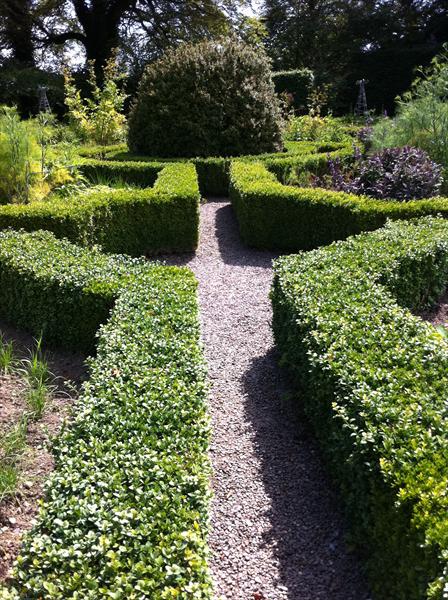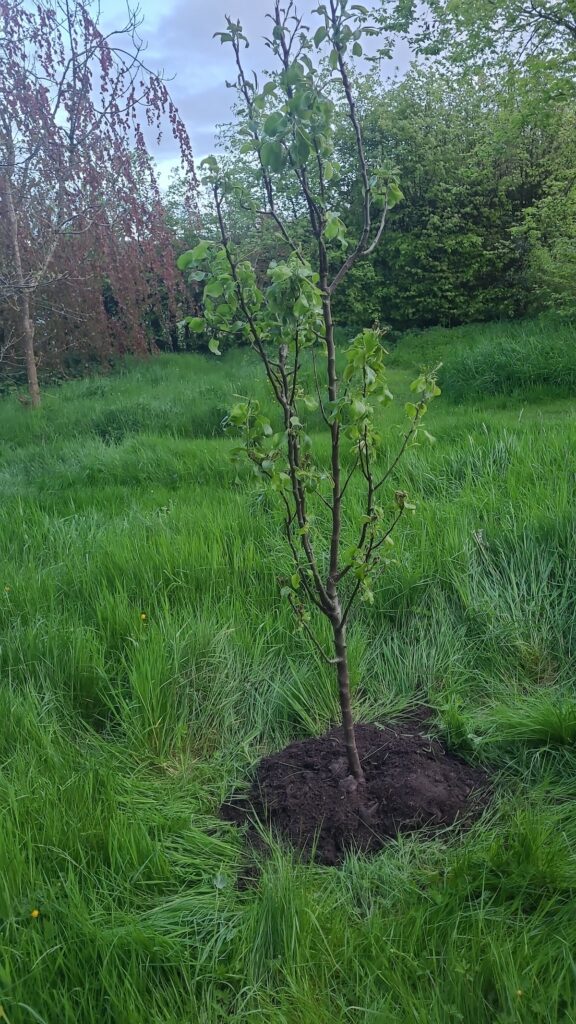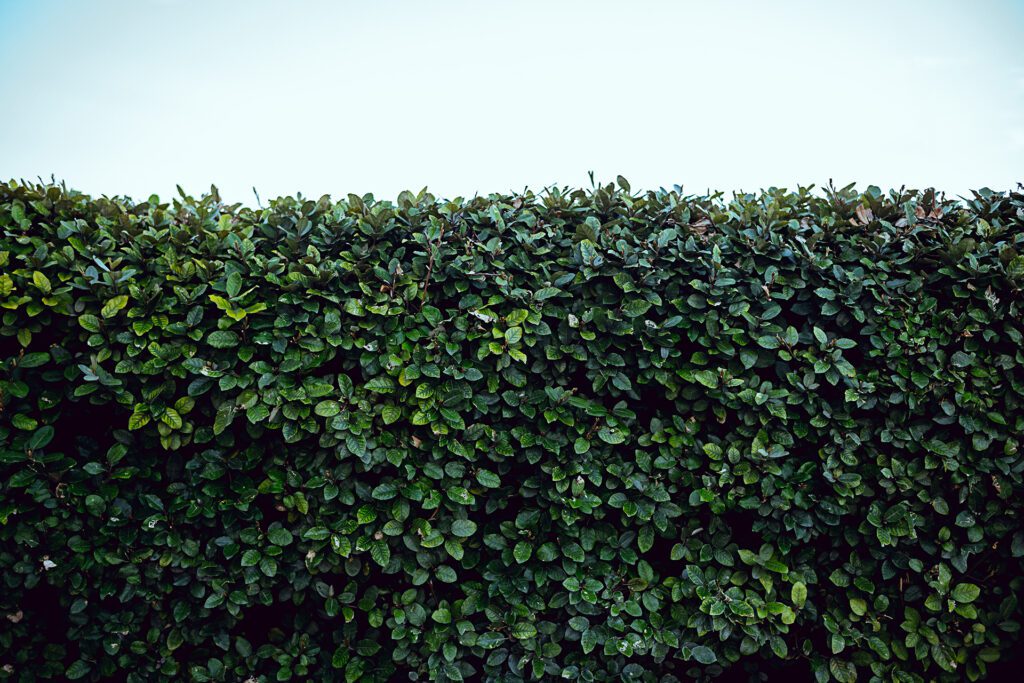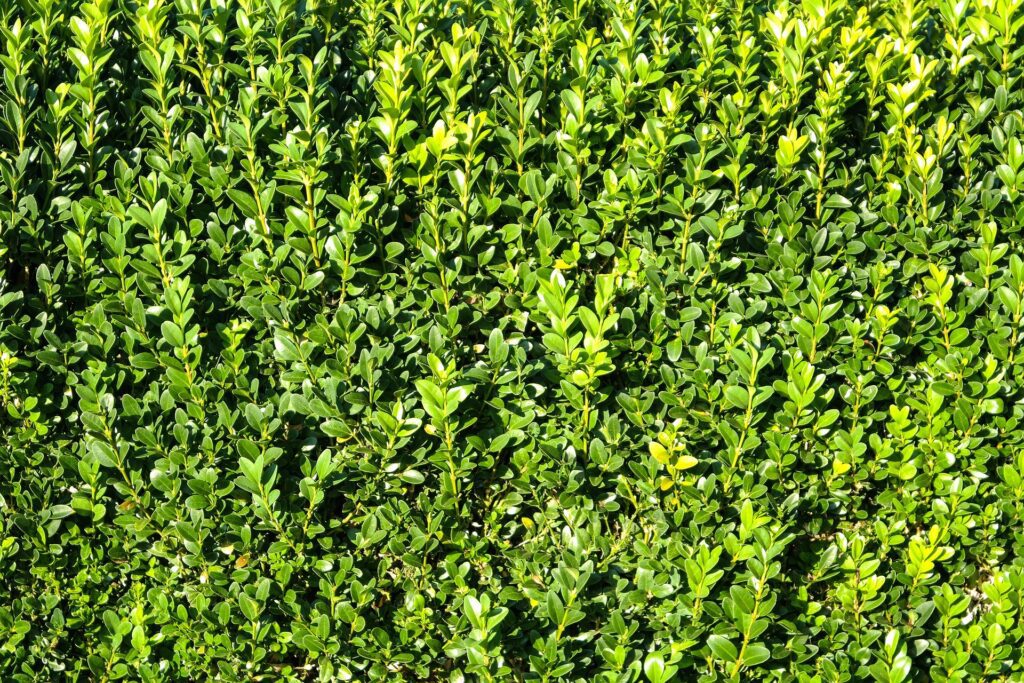July 2023. So far so good this year on box hedging. I have seen some really fine box hedges in full health so far this summer. However, many English and Irish gardens have seen box plants afflicted with various fungal leaf problems or insect damage. The leaves go brown in mid-summer and fall off. There are three different diseases which cause this to happen and while spraying with chemical fungicides will control the problem it is not in keeping with the idea of a garden as a green healthy space. Monty Don has said he would not plant box again. Rose growers have happily lived with this problem and lashed on the roseclear. The jury is still out in the horticultural industry but people are beginning to replace box with ilex crenata convexa and euonymus microphyllus and rosemary (rosmarinus officanalis).
Nov 2021: Box tree caterpillars are the larvae of a moth that feed on buxus plants. The pupae are concealed in white webbing (like a dense spider’s web) and are capable of defoliating a plant. We have seen the caterpillars of the box moth on plants in this country. We hope that the little birds the blue tits like these guys: there appears to be very few predators and use of damaging pesticides is not good for any of us. Keep up to speed on the topic on RHS (Royal Horticultural Society).
The following is an excerpt from the RHS website – Designing a garden to reduce box blight impact
Box blight may never appear in your garden. However, in case it does, there are a few simple planting considerations that will make it easier to isolate and manage.
Nothing is quite like box (Buxus spp.). No matter whether you have a few balls or topiaries, a parterre or two, or a garden based on it, box adds a structure than no other plants can quite match. With its naturally dense and rounded growth habit, box can be used in many ways and can find a place in any garden.
Of course, the delights of box go out the window if an outbreak of box blight results in unsightly bare patches. Box blight can be difficult to manage once it is found in a garden and forward planning should start with elements of garden design. Whether designing a garden from scratch, or making changes here or there, it is important to consider whether to grow box, where and how to grow it and what cultivars to choose.
Decide how much box to plant
- Only grow as much box as you can manage
Create spaces between box plantings
- Avoid a continuous ‘pathway’ (e.g. a very long hedge) of box that the pathogen may move along
- Separation of box plantings with, for example, stretches of lawn or other plantings makes it easier to manage them as separate blocks
- Avoid surrounding box topiaries with box hedges
Plant box in well ventilated areas
Box blight thrives in shady, damp areas so avoiding these conditions will reduce risk.
- Choose areas that have good airflow so that leaves are unlikely to remain wet for long periods
- Create and maintain space around the box. Crowding out the box with surrounding plantings will reduce airflow and increase humidity. Watch out for rapid growth of perennials in spring or fast-growing neighbouring shrubs
- Spacing plants a little further apart will improve air circulcation (30-40cm (1ft-16in) apart for B. sempervirens; 10-15cm (4-6in) for the more compact B. ‘Suffruticosa’)
- Avoid planting in areas with overhead watering. Drip irrigation will result in less leaf wetness




